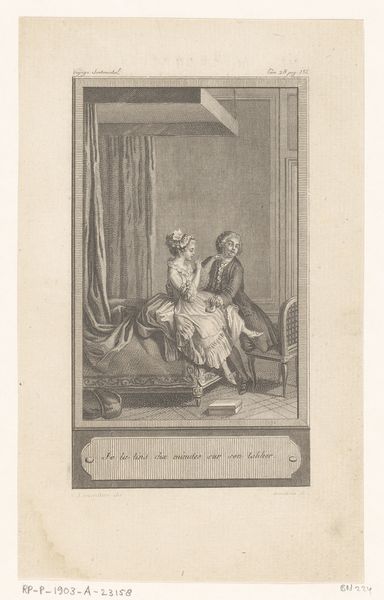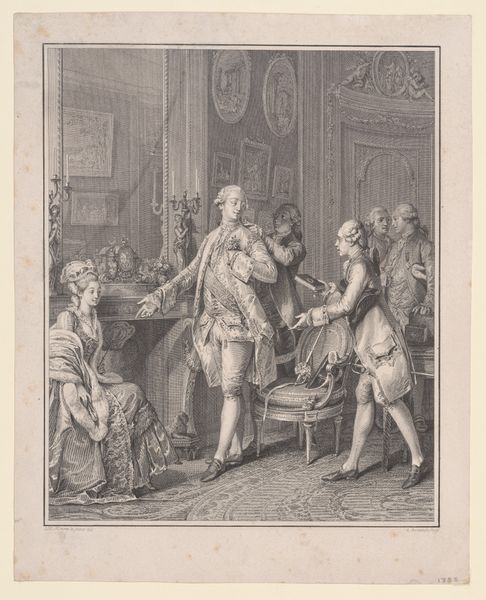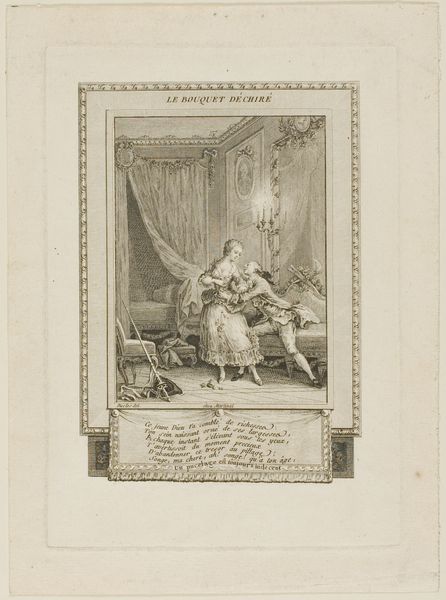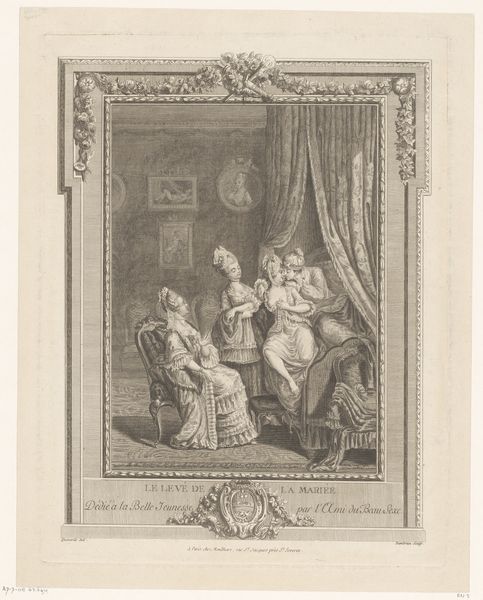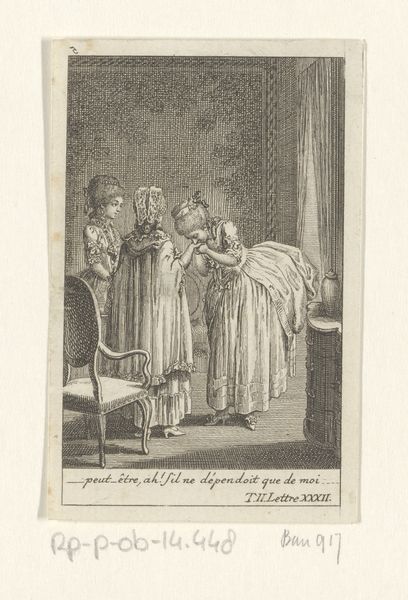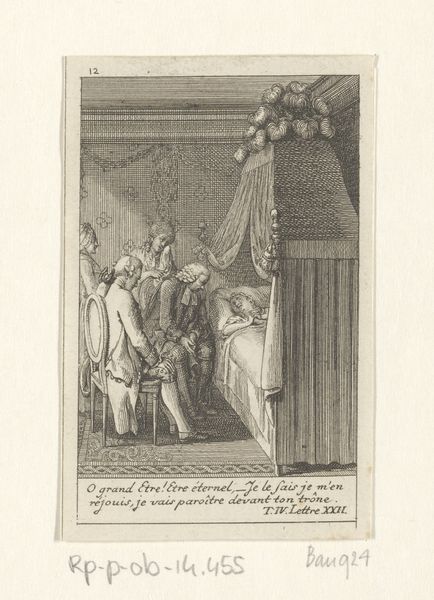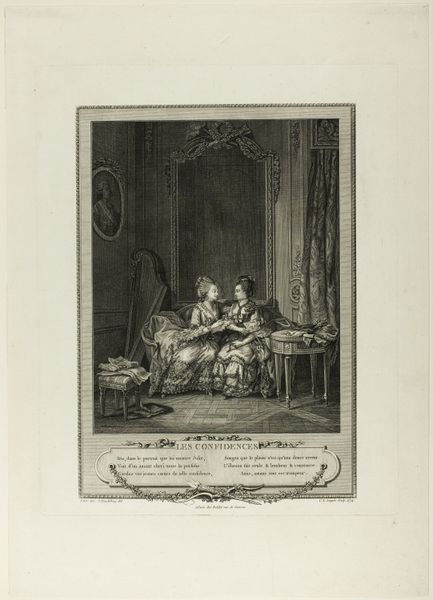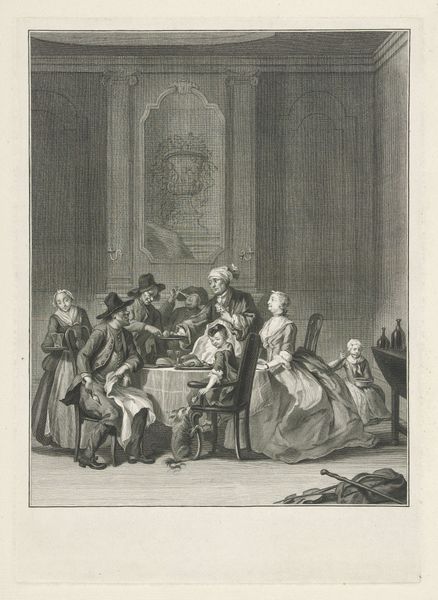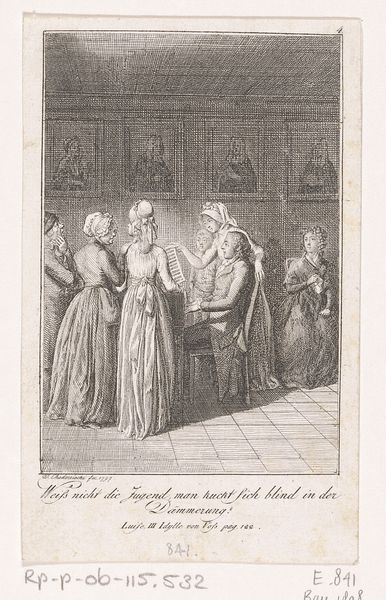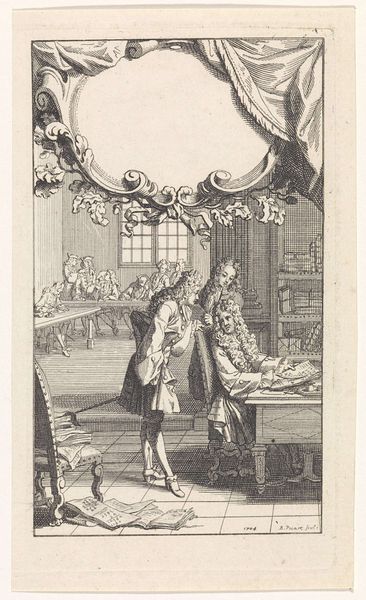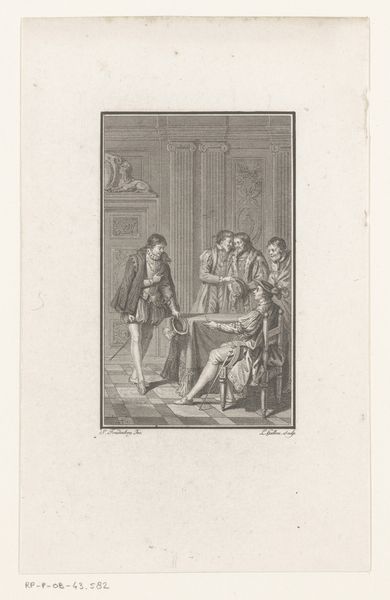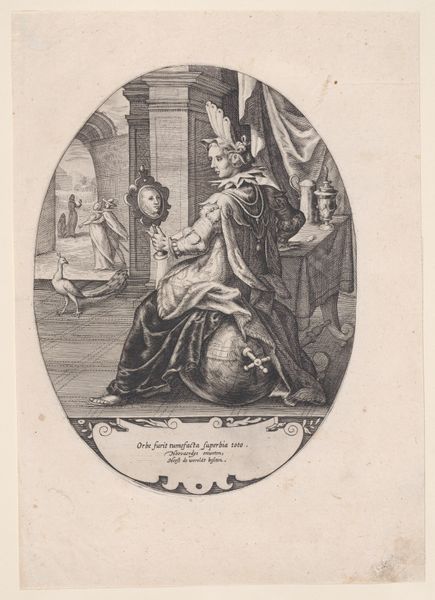
Julie en St. Preux bij het diner, omringd door Julies kinderen 1782
0:00
0:00
danielnikolauschodowiecki
Rijksmuseum
Dimensions: height 87 mm, width 57 mm
Copyright: Rijks Museum: Open Domain
Curator: This engraving by Daniel Nikolaus Chodowiecki, titled "Julie en St. Preux bij het diner, omringd door Julies kinderen" dates to 1782 and offers a fascinating snapshot of domestic life. It is currently held at the Rijksmuseum. Editor: Immediately, the intimacy grabs me. It's as if we are eavesdropping on this quiet, busy domestic scene. There’s almost a feeling of being overwhelmed as a mother with that many little kids running about. Curator: Indeed. Chodowiecki, a master of the line engraving, captures the essence of 18th-century bourgeois life, emphasizing themes common within genre paintings and northern-renaissance portraiture. Observe how he utilizes meticulous, dense line work to define textures and spatial depth. The materials used – the copper plate, the etching tools, the ink – dictated this specific aesthetic, one that could be reproduced for mass consumption within the context of burgeoning print culture. Editor: Right, but despite its accessibility and the precision of the line, I'm drawn to the moodiness—that sense of a real, breathing moment. Note her tender gesture towards one child while dinner must still be attended. It has an imperfect grace about it. A truth of family, of domestic bliss, a snapshot across time. It even comes across with Baroque overtones! It makes me feel… a yearning for home? If my home were inhabited by elegantly dressed folks in the late 1700s. Curator: The inscription reinforces this. As noted in the bottom part of the print, "La raison peut s'égarer dans un chalet tout aussi bien que dans un cellier," speaks to domestic spaces that provide just as much room for madness as any castle. I see an accessible artwork providing social commentary. The labor involved in the image-making is, essentially, intellectual. Editor: Hmm, it speaks also of our reason, that little box, as one wanders amid feelings: parental joy, slight anxiety and more mundane moments that weave together, not perfectly, to create daily life! Even now. Curator: Precisely, this work acts as a lens to understand both material and immaterial realities of the past and the cultural implications in its production! Editor: To feel across centuries a shared glance or experience of shared, quotidian intimacy, well, that's art's sneaky power, eh?
Comments
No comments
Be the first to comment and join the conversation on the ultimate creative platform.
